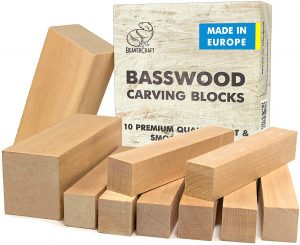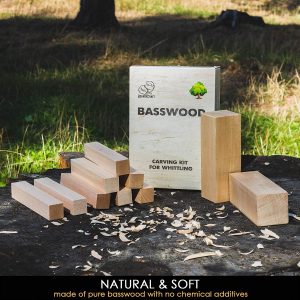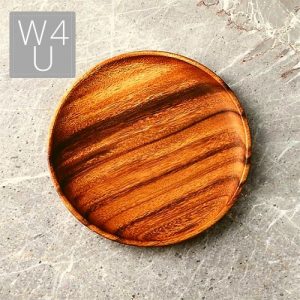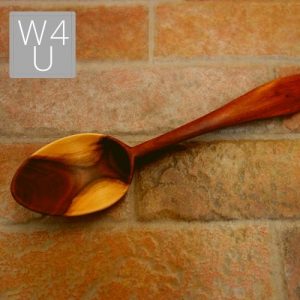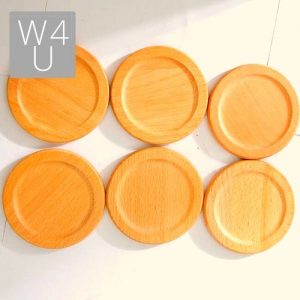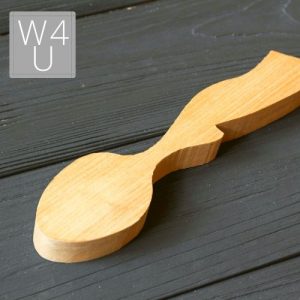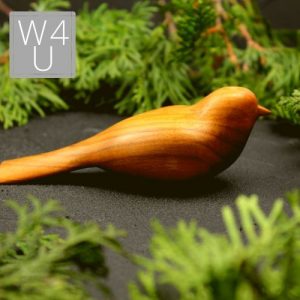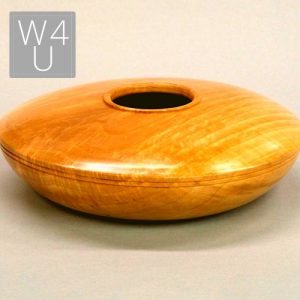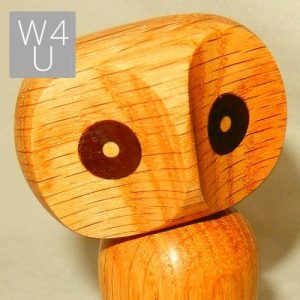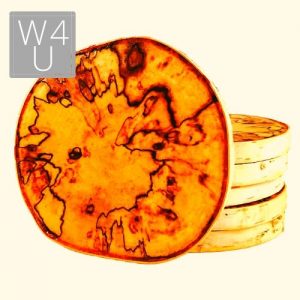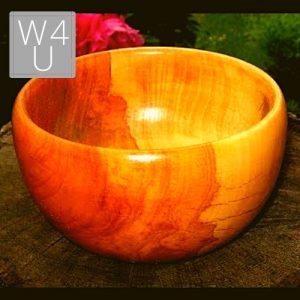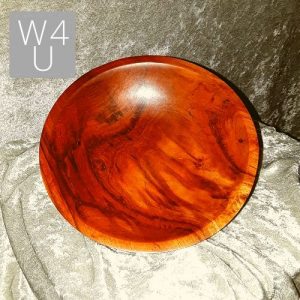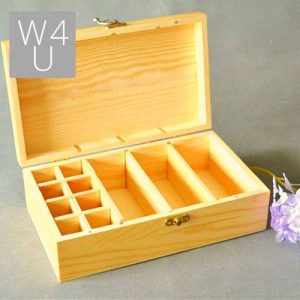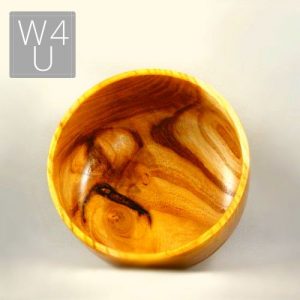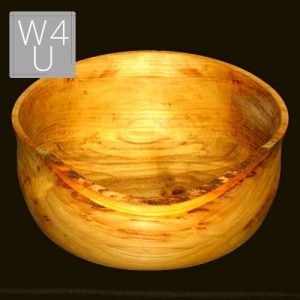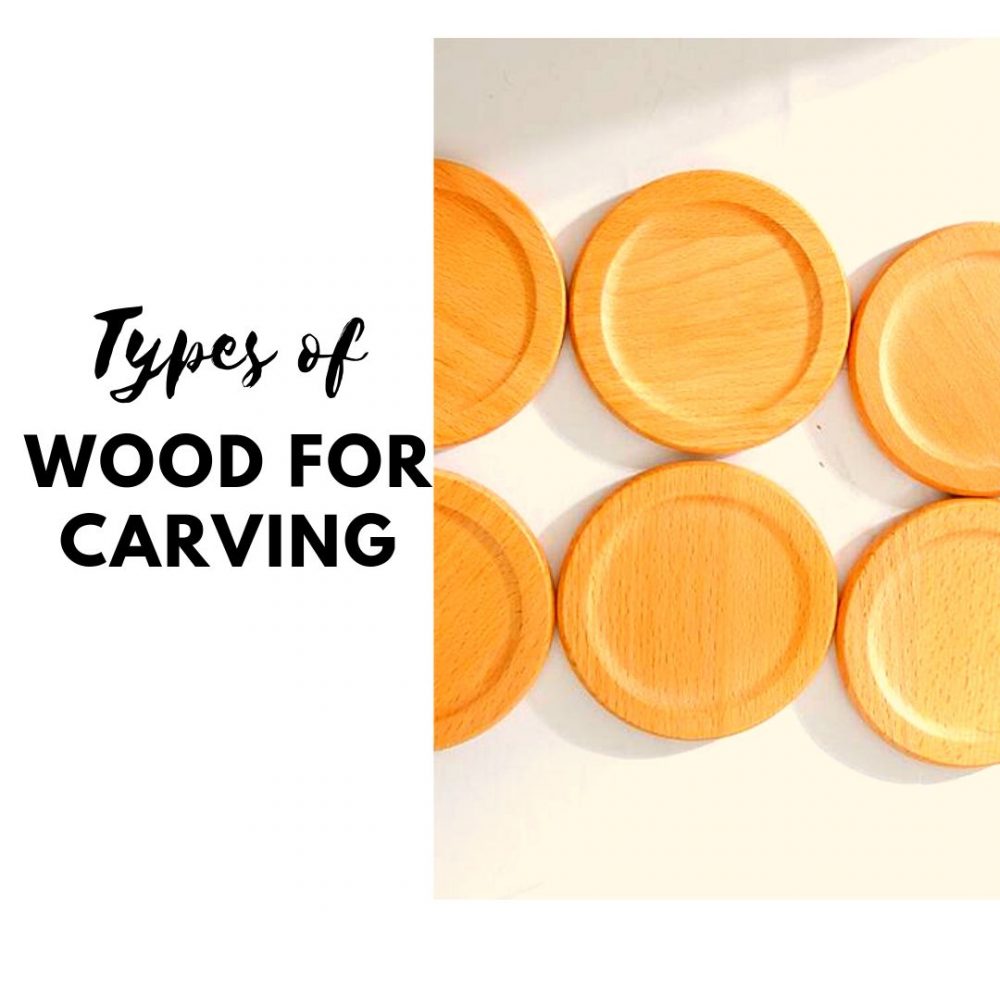
Throughout history, people have been using wood for various purposes since ancient times. Despite our increasing knowledge and the invention of new materials, wood continues to be important in our lives. Each type of wood used for carving has its own characteristics, and if you understand these differences, you can select the right kind of wood for any project you’re planning, whether it’s constructing something, making furniture, creating decorations, or anything else.
In general, all types of wood are classified into hardwood and softwood. We will discuss the properties of both hardwood and softwood and examine different types of wood from specific tree species.
We understand the difficulty woodcarvers face when selecting the perfect wood for their projects. With numerous options available across various marketplaces, including sets of wood carving blocks made from diverse wood types and sizes, the decision can be overwhelming. The extensive range of choices often leads to hours spent searching for the ideal blocks.
In this article, we’ve chosen to introduce you to the Basswood Carving Blocks Set by BeaverCraft.
This set includes 10 wood carving blocks and 1 large woodblock. The dimensions are:
- 8 pieces of woodblocks for carving – 1.02″ х 1.02″ х 5.95″
- 2 pieces of whittling wood blocks – 1.98″ х 1.98″ х 5.95″
It means you will be able to create at least 10 projects. Figurines, little sculptures, animals – you can try carving out everything you were thinking of with BeaverCraft blocks.
One of the key advantages of this set is its suitability for both beginners and professionals alike. The reason is straightforward: the wood blocks are crafted from Basswood, a beloved material among woodcarvers. Projects created from basswood exhibit remarkable longevity and aesthetics, thanks to its beautiful creamy color. Additionally, basswood boasts a lack of odor and features straight grain, making it highly desirable. Its softness makes it incredibly enjoyable to work with, which is why many novice woodcarvers also prefer basswood blocks for their projects.
This set isn’t just handy for adults; it’s also suitable for kids. Its user-friendly design and compactness make it easy for children to handle, allowing adults to share the joy of woodcarving with their youngsters.
Softwoods vs. hardwoods: What is the actual difference?
If you browse through numerous online discussions, you’ll often encounter the classification of carving woods into two primary categories: softwoods and hardwoods. While this classification holds some truth, it’s not entirely accurate. Engage in conversation with seasoned and experienced carvers, and they’ll enlighten you that defining hardwoods as simply solid and softwoods as soft is an oversimplification.
Delving deeper into the realm of wood types reveals a complexity far beyond what many might anticipate. What we commonly label as “softwoods” encompass conifer trees bearing spiky leaves (gymnosperms), while “hardwoods” typically denote deciduous trees (angiosperms). Each wood type, along with its various species, serves distinct purposes across industries such as furniture, construction, and wood carving.
Experienced craftsmen understand that while many “hardwoods” are generally tougher to carve, this isn’t always the rule. Surprisingly, certain hardwoods can be softer and more manageable than some “softwoods.” For instance, beginners are often advised to begin with basswood due to its ease of handling, despite basswood being classified as a hardwood. Similarly, other hardwoods like butternut and aspen share this characteristic ease of carving.
The distinction between softwoods and hardwoods also extends to the tools used. For instance, knives designed for handling the toughest hardwoods like maple and oak feature a steeper bevel compared to those used for working with “softer” hardwoods or softwoods.
What is the best wood to carve?
Determining the best wood for whittling doesn’t have a definitive answer. Every type of wood has its strengths for carving specific projects.
Your choice of wood depends on various factors: your skill level, the tools you have for handling hardwoods, the size of your project, and which properties of the wood you want to emphasize—whether it’s plasticity, color, durability, or woodgrain. Additionally, your current budget plays a role.
Once you’ve considered these factors and learned about the characteristics of different wood species like cherry, acacia, and basswood, you’ll realize that each wood suits specific needs.
For instance, if you prefer working solely with hand tools and lack power tools, basswood would be the ideal choice. On the other hand, if you’re a seasoned craftsman equipped with skillful hands and power tools, showcasing your artistry with dense and exquisite woods like maple or oak would be more fitting.
Hard Wood for Carving
The initial category of woods is known as hardwood, characterized by trees with broad leaves. Representative species include maple, oak, mahogany, walnut, hickory, alder, beech, and various others, thriving in diverse climate zones.
This wood type exhibits a vast range of appearances, densities, and strengths. Harder varieties find utility in construction and furniture making, offering longevity and excellent fire resistance due to their high density. However, hardwood tends to be pricier than softwood due to its slower growth rate. Let’s delve into the advantages and disadvantages of using hardwood for whittling and carving:
Advantages of hardwood
High density: Boasts a dense composition, providing a robust and stable material for whittling. This density enables precise carving and intricate detailing, as the wood retains its shape and structure even when subjected to pressure, resulting in finely crafted artworks.
Fire resistance: Naturally resists fire, making it a safer choice for whittling projects. Carvers can work with confidence, knowing that the wood is less susceptible to ignition or damage from heat sources, ensuring a secure and controlled work environment.
Decay resistance: Inherently resists decay and deterioration, making it ideal for long-lasting whittling projects. This resistance shields whittled pieces from fungal growth, rot, and other forms of decay, preserving the integrity of the artwork over time.
Easy to maintain: Is relatively easy to maintain, requiring minimal care to uphold its quality and appearance. Regular cleaning and occasional polishing suffice to keep whittled pieces looking their best, allowing carvers to concentrate more on their craft and less on upkeep tasks.
Disadvantages of hardwood
Expensive: Hardwood can be costly compared to softwood alternatives. Its high demand, limited availability, and longer growth cycle contribute to higher prices, making it a less budget-friendly option for woodworking projects.
Grows slowly: Hardwood trees typically have a slower growth rate compared to softwood varieties. This slow growth means that it takes longer for hardwood trees to reach maturity, resulting in longer harvesting cycles and potentially contributing to sustainability concerns if not managed properly.
Difficult to cut: Due to its dense and sturdy nature, hardwood can be challenging to cut and shape, especially without the appropriate tools and techniques. The dense fibers of hardwood require more effort and precision when cutting, which can pose challenges for novice woodworkers or those working with limited equipment.
Soft Wood for Carving
Softwood originates from trees bearing needles or cones rather than broad leaves. Unlike hardwood, softwood features a simpler water transportation mechanism and a less intricate internal structure. It tends to be less dense compared to hardwood. Examples of softwood include cedar, pine, fir, redwood, and spruce.
Softwood constitutes the majority of timber usage, accounting for 80% due to its rapid growth rate, which renders it more economical. Additionally, softwood boasts greater resistance to insect infestation compared to hardwood, further enhancing its appeal.
However, due to its lower density, this timber exhibits poor decay and fire resistance. Additionally, the production of sticky saps can affect the ease of working with it. Let’s examine the advantages and disadvantages of using softwood for whittling and carving:
Advantages of softwood
Easy to cut: Relatively easy to cut and shape due to its less dense and more pliable nature. This makes it ideal for woodworking projects where ease of cutting and manipulation are important, allowing for smoother and more efficient crafting processes.
Grows fast: Softwood trees typically have a faster growth rate compared to hardwood varieties. This rapid growth means that softwood trees can be harvested more frequently, resulting in a more sustainable and readily available source of wood for various applications.
Not expensive: Softwood tends to be more affordable than hardwood options. Its faster growth rate and greater abundance contribute to lower production costs, making softwood a cost-effective choice for woodworking projects, particularly for those on a tight budget.
Resistant to insects: Naturally possesses certain properties that make it resistant to insects and pests. This resistance helps protect softwood from damage caused by wood-boring insects such as termites, ensuring the longevity and durability of wooden structures and products made from softwood.
Disadvantages of softwood
Low density: Typically softwood has a lower density compared to hardwood, which can result in less durability and stability for certain applications. This lower density may make softwood less suitable for projects requiring robustness or heavy-duty use.
Not resistant to fire: Generally less resistant to fire compared to hardwood. Its lower density and higher resin content can cause softwood to ignite more easily and burn at a faster rate, posing fire hazards in certain situations.
Poor decay resistance: Softwood is often more susceptible to decay and deterioration compared to hardwood. Its lower density and higher moisture content make it an attractive habitat for fungi, bacteria, and insects, leading to potential rot and decay over time if not properly treated or maintained.
Sticky sup: Softwood trees, such as pine and spruce, can produce sticky sap that can be difficult to clean and may interfere with woodworking processes. The presence of sap can make working with softwood messy and may require additional effort to remove during finishing and maintenance.
Difficult to maintain: Softwood may require more frequent maintenance compared to hardwood to preserve its quality and appearance. Its lower durability and susceptibility to decay and damage may necessitate regular sealing, staining, or protective treatments to prolong its lifespan and maintain its structural integrity.
Wood carving is possible on both hardwood and softwood. Not all hardwoods are dense and challenging to carve, just as not all softwoods are exceptionally soft and suitable for hand carving. Let’s explore some of the most common wood species and analyze their properties concerning wood carving.
Best Wood for Wood Carving
In the realm of wood carving, the choice of wood holds immense importance, profoundly impacting the outcome of the carving process. Opting for the finest wood for carving or whittling is crucial, influencing factors such as carving ease, detail precision, and the overall visual allure of the completed artwork. Each wood type presents unique characteristics, grain patterns, and textures, catering to diverse carving methods and artistic expressions. Mastery of the qualities inherent in various wood types is indispensable for every wood carver aspiring to craft exceptional and enduring works of art.
Acacia
Acacia, both in its tree and shrub forms, finds utility in handcrafting. Known for its superior quality, acacia is particularly favored for turning projects due to its hardness and strength. The wood typically exhibits hues of yellow, yellow-greenish, or olive-green, with distinct annual growth rings. Acacia is also a preferred choice for crafting miniatures, given its strength and water resistance. For finishing projects made from acacia, using paraffin wax is recommended.
Hawthorn
Hawthorn wood is renowned for its remarkable solidity, which contributes to its higher price due to its numerous desirable qualities. This timber is particularly well-suited for intricate carvings. The wood of mature hawthorn trees exhibits a reddish or reddish-brown hue, while younger specimens tend to display a yellowish coloration.
Beech Wood for Carving
Beechwood thrives across Europe, Asia, and America. Renowned for its strength and density, this wood type features straight, tight, and fine grain, with a uniform texture. Beechwood timber boasts a very light, creamy hue, often exhibiting a natural gloss. Occasionally, it may showcase subtle brown or pink undertones.
Basswood
The best wood for carving that would fit almost all whittling projects is basswood. Being odorless, easy to color and work on the texture, Basswood gets the number one priority in the list of woods. It’s a perfect match for spoon carving as well as caricature carving.
Cherry
This wood is preferred to be used for tiny items by many woodcarvers. Because of the beautiful reddish-brown color and the structure of the material it eagerly accepts dying. The grains are wavy and difficult for hand carving but reveal beautiful grain patterns. This wood is perfect for natural-finish sculpture when used best carving tools.
Pear
Wild pear wood is highly pliable and easy to work with, offering solidity and comfort during carving. Its natural hue tends towards a yellowish tone, occasionally verging on white. It can be easily cut in any desired direction and polishes exceptionally well. Carvers appreciate these qualities, as items crafted from pear wood boast exceptional aesthetics.
Oak
Oak wood, renowned for its solidity, weight, and longevity, presents a range of hues from light brown to yellow and ash gray, the color evolving with the age of the tree, yet always retaining its innate beauty. As one of the most durable and robust woods, oak exhibits remarkable resistance to decay and fungal growth. Carved oak pieces, especially larger ones, showcase stunning aesthetics and are highly esteemed. Oak polishes effectively, and sculptures can achieve a splendid finish with the application of beeswax.
Birch
Birch stands as a favorable option for carving, despite its hardness. Its strength and beauty make it a popular choice for flooring and furniture. Birch features a fine grain and a light color with a natural shine. However, if not properly dried, birch may be susceptible to warping and cracking. To safeguard your project from damage, it’s essential to avoid leaving fresh or undried wood exposed to the air. Instead, when taking breaks during your work, store the wood in a plastic bag to maintain its integrity.
Apple
Working with apple wood is a delightful experience, as it offers smooth, even cuts akin to cutting through soap. This wood presents intriguing color variations and contrasts between the heartwood and sapwood, with the former being darker and the latter lighter. Structurally akin to pear wood, apple wood shares similar properties, albeit being slightly harder. Widely distributed, apple trees provide abundant material for creations, with even a branch from your garden serving as potential material.
Poplar
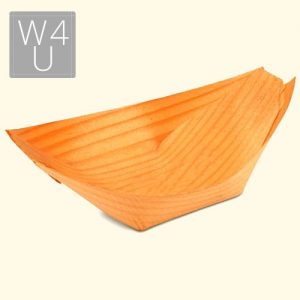
Plum Wood for Carving
Plum wood exudes a vibrant charm, yet it poses challenges in handling. Solid and light-colored, plum wood is adorned with colorful wood threads in various shades of brown and pink. It excels in crafting spoons and utensils. However, caution is warranted when carving undried plum wood, as it may split during the drying process.
Pine
White pine typically exhibits a yellowish or reddish-white hue, which gradually darkens over time to a red-brown shade. While similar to basswood in terms of wood carving properties, white pine possesses a slightly more obstinate grain. Pine wood is renowned for its durability and widespread popularity in woodworking projects. However, when used for carving, it may be prone to splitting and chipping initially, although with practice, craftsmen can adeptly manage these challenges.
Mulberry Wood for Carving
Mulberry shares similar characteristics with other fruit trees, allowing for a consistent approach to carving and maintenance. Its color spectrum ranges from golden brown to yellowish-white. Solid and resilient, mulberry wood demonstrates resistance to both insects and atmospheric exposure.
Cottonwood
This wood category encompasses several distinct species found in North America. Belonging to the same family as poplar, it shares similar properties. Varieties include plains, eastern, swamp, black, palmer, Fremont, and narrow leaf cottonwood. The wood’s color ranges from pale brown to light yellow or nearly white.
The grain is mostly straight or sometimes a little bit irregular or interlocked. The material is good for hand carving but you should pay attention to the fact that you will definitely need sharp tools to avoid fuzzy surfaces. Cottonwood may easily warp distort when drying but it glues and finishes well. The rot resistance is the same low as the resistance to insect attack. You can easily find carving blocks or blanks for your crafts, the prices are low.
Overall
As evident, each wood type possesses distinct characteristics such as texture, plasticity, hardness, grains, and common defects. Greenwood, referring to wood that hasn’t undergone drying, contains more moisture and is notably easier to cut compared to dry wood. Moreover, the hardness of the material varies with environmental humidity; higher humidity softens the material, making it easier to work with.
Frequently Asked Questions
What is the softest wood for carving?
When it comes to basswood, its tender and soft structure are allowing you to put almost no effort into your most complicated cuts. Basswood makes it very pleasant to work with and correct any mistakes you may make.
Is pine wood good for carving?
Pine is quite durable and popular for all woodworking. For carving it may produce splitting and chipping but with more practice one can learn to work with it.
Is Cottonwood good for carving?
The grain is mostly straight or sometimes a little bit irregular or interlocked. The material is good for hand carving but you should pay attention to the fact that you will definitely need sharp tools to avoid fuzzy surfaces. You can easily find carving blocks or blanks for your crafts, the prices are low.
What wood is used for spoon carving?
Basswood fits whittling projects perfectly because it is always easy to get. It’s a perfect match for spoon carving as well. Basswood has proven itself to be a very flexible, multipurpose wood carving wood that is a pure pleasure to work with.
What are the different types of wood carving?
Spoon Carving is one of the most popular types of carving, as it’s easy to start making a spoon or a bowl. Chip Carving tends to be more focused on small details. Plus we should remember about relief carving, caricature carving, etc. Check out the article to figure out what wood will fit your projects the best.
Should I carve green wood or dry wood?
Carving green wood has its advantages, greenwood is softer and easier to work with. It smells fresh wood, each type has its particular scent. Greenwood is great for beginners and just for “whittling around” when you don’t care much if your carving may be spoiled in the future when the wood dries. Professional wood carving, of course, is made with dry wood.
What is wood carving called?
Wood Carving is not just a hobby, it’s a bright new world that will REDUCE the amount of DAILY ROUTINE in your life.
Whittling is a MEDITATION and PSYCHOLOGICAL THERAPY when you come tired after work.
Woodworking is a field to realize YOUR TALENTS by creating something.
Carving Wood a lot of FRIENDS all around the world.
Moreover, it’s an occupation that fits ANY WEATHER, ANY LOCATION, ANY TIME!
It’s unusual, OUT OF THE BOX, extremely exciting!
What is a good carving wood?
Basswood fits whittling projects perfectly because it is always easy to get. It’s a perfect match for spoon carving as well. Basswood has proven itself to be a very flexible, multipurpose wood carving wood that is a pure pleasure to work with.
Is Cherry good for carving?
This wood is preferred to be used for tiny items by many woodcarvers. It is of beautiful reddish-brown color and the structure of the material eagerly accepts dying. The grains are wavy and difficult for hand carving but reveal beautiful grain patterns. This wood is perfect for natural-finish sculpture.
Is balsa wood good for carving?
For woodcarving, on the other hand, balsa wood is more of a challenge than a considerable choice. It has a low density of fiber which makes it difficult to make a detailed and precise carving. So, if you have a complex carving project in mind or chip carving, consider other types of wood, for example, basswood.
Is butternut a hardwood or softwood?
Basswood and butternut have much in common, they both are easy-to-carve and quite popular among woodcarvers. Although butternut has a darker color and more beautiful grain pattern, basswood is still a little bit easier to cut, easier to find and it’s cheaper. But generally, the most easy-to-carve wood that is good for detailed carving is basswood.
What is the easiest wood to carve?
When it comes to basswood, its tender and soft structure is allowing you to put almost no effort into your most complicated cuts. Basswood makes it very pleasant to work with and correct any mistakes you may make.
